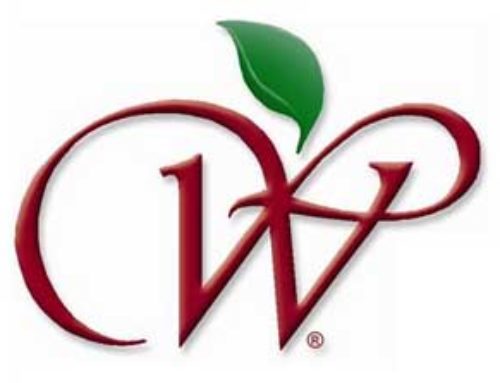—story by Kate Prengaman
—photos by TJ Mulllinax

You know it’s a hot field day when attendees are hanging out under the drape net, trying to avoid sunburn, along with the pears.
Luckily, there’s a lot of shade netting to be found in South African orchards. Nets were a hot topic on the last two days of the International Fruit Tree Association’s study tour, which visited apple and pear orchards in the Greyton area and stone fruit in the Nuy Valley on Dec. 9 and 10.
Both regions contend with warm winters, but the lack of chill creates more challenges at pome fruit producer Oewerzicht Farm. The farm, part of the Two-a-Day Group cooperative, included 55 hectares of apples and 20 hectares of pears.
Before installing the netting, the farm lost up to 30 percent of its Cripps Red to sunburn. Putting the nets over older plantings on vigorous rootstocks can create some challenges, said Graeme Krige, the technical manager for the cooperative who acted as the primary tour host.
“We have the nets, and then we put the light back that you remove with the nets with reflective material and leaf removal,” he said.

The nets go up 40 to 60 days after full bloom, and after making sure there are no pest problems that could blow up under the cover, Krige said.
The farm uses both drape net and overhead netting, depending on the preexisting trellis system.
In a Packham’s Triumph pear block, drape nets save a lot of fruit from being downgraded due to yellowing and sunburn. But, workers do a lot of summer pruning, especially in the vigorous trees, to create more open canopies that let light in. “We are farming light,” Krige said.
Krige also talked about the critical importance of rest-breaking chemicals to push the pome fruit cultivars out of dormancy. Why not plant stone fruit instead? Well, the region can be hit with bloom-time storms: “A disaster to stone fruit,” he said.
In the Nuy Valley however, growers are spared from those storms, so they are heavily planted with stone fruit. The tour visited Oudewagendrift Farm, home to about 90 hectares of stone fruit and a dairy operation.

Hosts Wilhelm Naudé, the owner, and Hannes Laubscher, the technical director for United Exports, took the group to see young plantings of nectarines and flat (donut) peaches. The nectarines, trained with two leaders in a single planar row, produced 20 tonnes per hectare in the second leaf.
“The production curve is just a lot quicker under the nets for us,” Laubscher said.
Oudewagendrift also spends “quite a bit” on summer pruning. Laubscher detailed the three passes: the first one just after pit hardening, to strip the water shoots that create competition; the second two weeks before harvest, to cut back to the fruit and help it get more color; and the third after harvest, to work on the tops and the canopy of the tree once irrigation has been reduced and the trees have calmed down. •








Leave A Comment